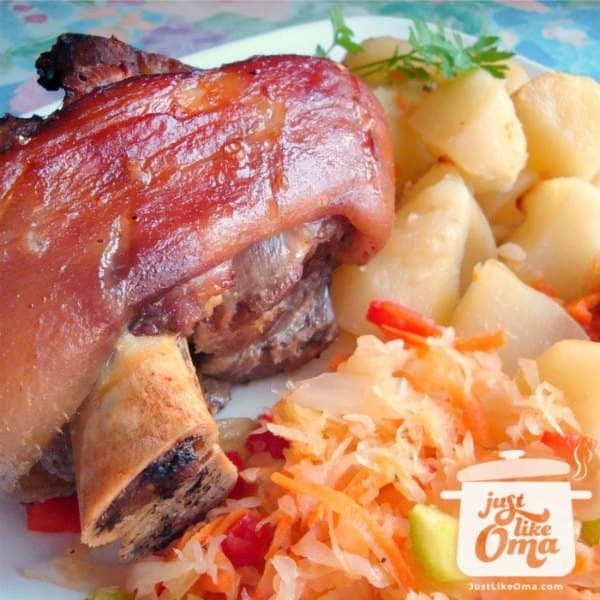How to Cook Pork Hocks Just like Oma

Learn how to cook Pork Hocks, not just for Oktoberfest, but anytime you want something traditionally German and wonderfully delicious! There are two main methods for cooking pork hocks. This one uses both cooking on the stove and finishing off in the oven. May sound like extra work. It really isn't and the results are worth it! This is REAL German food, Oktoberfest style!
Called Eisbein in northern Germany and Schweinshaxe in the southern part, it is cooked from fresh ham hocks rather than smoked hocks. German recipes don't get much better than this!
Schweinshaxe (as it's called in southern Germany) is a roasted ham hock or pork knuckle
Eisbein (as it's called in northern Germany) is usually pickled first and then boiled
Originally this was considered food for the poor people, aka Armeleuteessen, since it was made with inexpensive cuts of meat
Since this is a tough piece of meat, full of connective tissue, ligaments, and muscle, it needs to be cooked low and slow, to turn it into delicious fork-tender meat
Traditionally this is served with potato dumplings and red cabbage or with sauerkraut and potatoes
How to Cook Pork Hocks
Ingredients:1 leek, well cleaned, diced1 stalk celery, diced
1 carrot, diced
1 onion, diced
1 - 2 meaty pork hocks
salt, peppercorns, cumin (if desired)
Instructions:Put vegetables, 1 tsp salt, 1 tsp peppercorns, and pork hocks in pot.
Add water to cover, bring to boil, reduce heat to simmer, and cook until hocks are just tender - about 2 - 3 hours. Do not overcook.
Drain, keeping vegetables and cooking liquid.
Preheat oven to 425°F.
To baking dish (if cast-iron pot is use, add 2 Tbsp of oil), add drained pork hocks, drained cooked vegetables, and a small amount of the cooking liquid.
Bake 30 minutes, occasionally basting meat with cooking liquid.
Serve meat with potatoes and sauerkraut. If desired, serve the cooking liquid (thicken with corn starch if desired). Add a bit of cumin to liquid if desired.
Hints:Keep the extra drained liquid from cooking the pork hocks. Use what's needed for the roasting process. Let the rest cool and refrigerate. Skim off the congealed fat and use the broth for soups or stews.
Source link from : https://www.quick-german-recipes.com/pork-hocks-recipe.html
BERITA LENGKAP DI HALAMAN BERIKUTNYA
Halaman Berikutnya